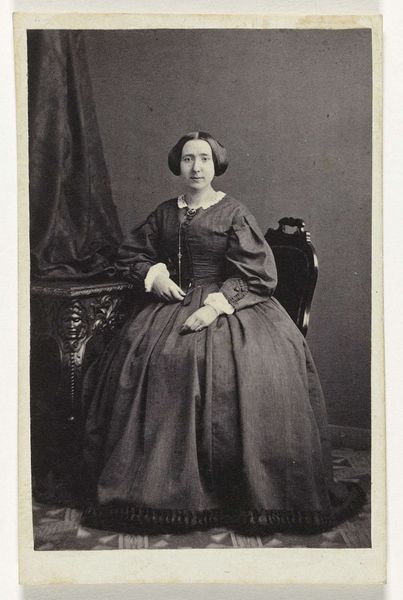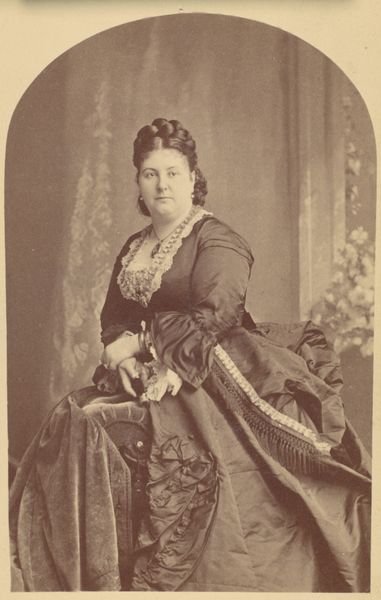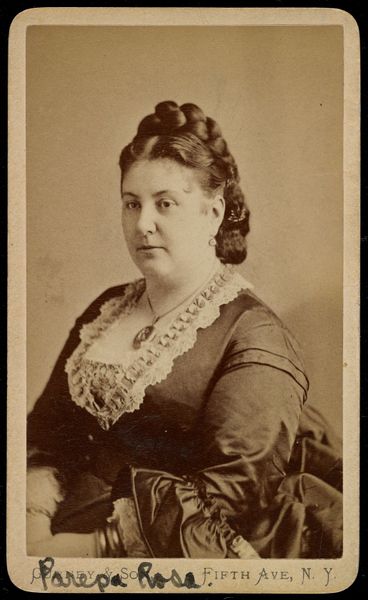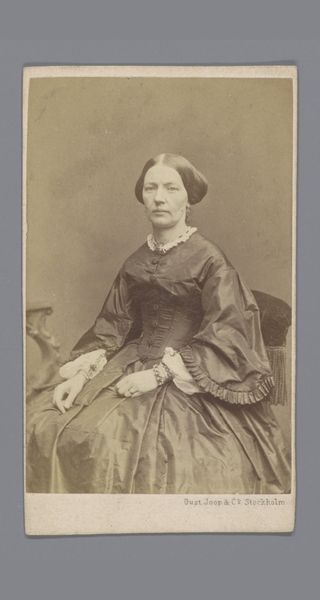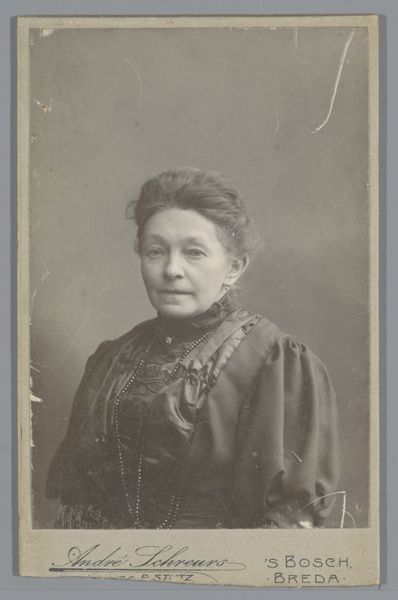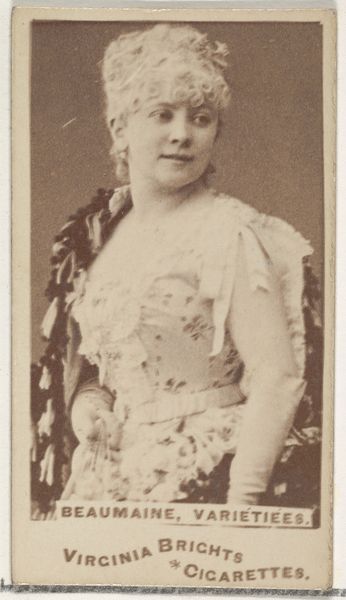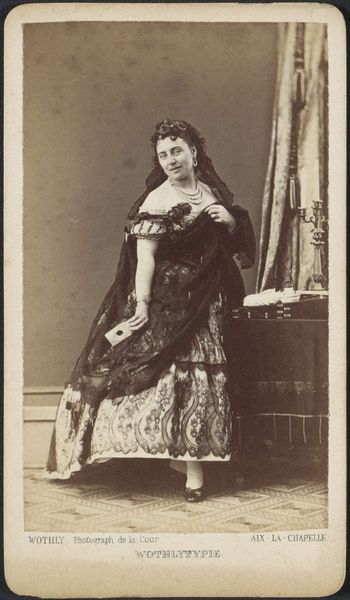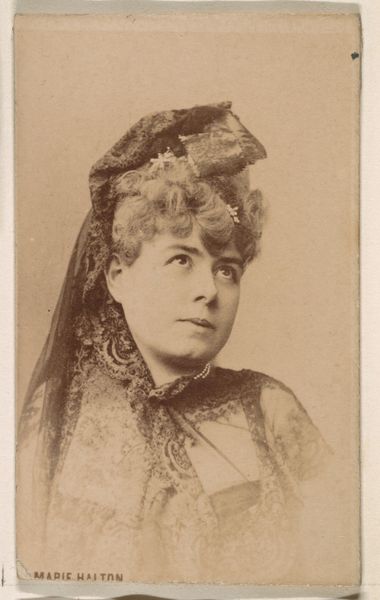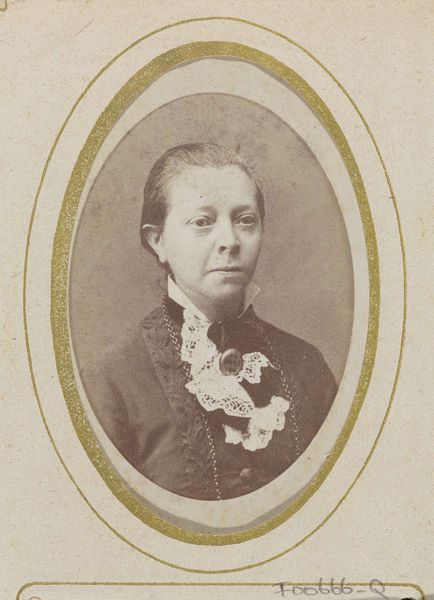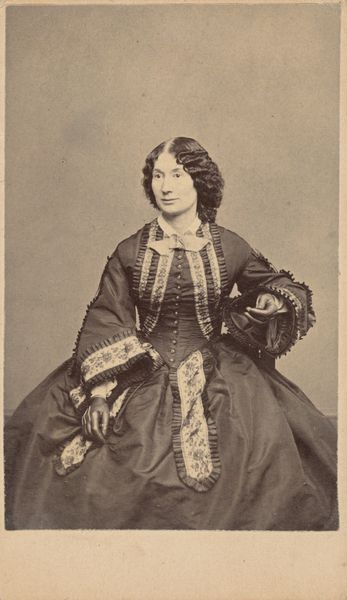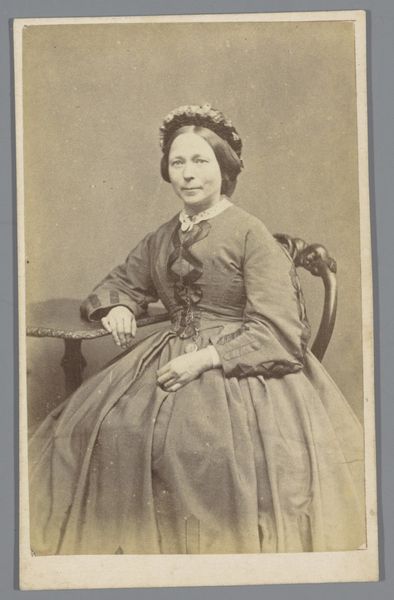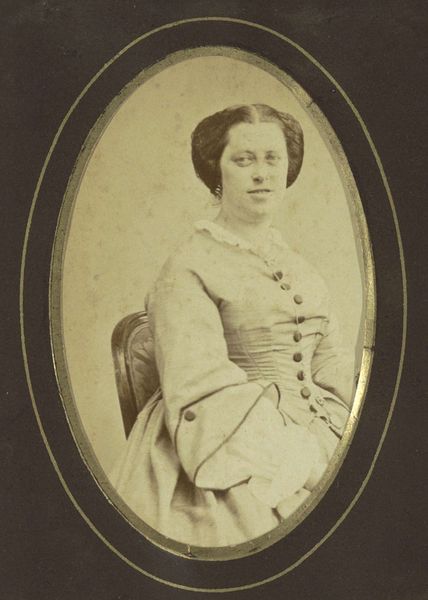
photography, gelatin-silver-print
#
portrait
#
photography
#
historical photography
#
gelatin-silver-print
#
portrait photography
Dimensions: height 164 mm, width 113 mm, height 168 mm, width 124 mm
Copyright: Rijks Museum: Open Domain
Editor: Here we have a portrait of Sophie, Princess of the Netherlands, taken around 1889. It’s a gelatin-silver print. There is such stillness and formality. What strikes you most about it? Curator: As a materialist, I'm immediately drawn to the labour and materiality evident in this photograph. Consider the social context that created the demand for meticulously crafted items like the lace, pearls, and even the gelatin silver print itself. Each element embodies class distinctions and consumerism of the late 19th century. Do you see how the production of this single image connects to broader economic structures? Editor: I do. I see how the material signifies wealth and status so overtly, in a way that painting might subtly imply through brushwork or subject matter, but photography states as fact. Are you also considering the labor required for these photographic prints? Curator: Exactly! We tend to forget that photography in the 19th century was not just point-and-shoot. The process of creating a gelatin-silver print involved specialized labor. Someone had to produce the materials, another prepare the chemicals, then there was the photographer and darkroom technicians. These are the often-invisible elements in the creation of an image that speaks volumes about that era's social stratification and industrialized production. What labor is absent, by being concealed by the image? Editor: Thinking about it that way definitely makes me reconsider photography as a document – and makes me more aware of all the hands and processes that went into it. Curator: It transforms the photo from a simple representation of royalty into evidence of a complex interplay between technology, labor, and class. Looking at the art this way really opens up our understanding.
Comments
No comments
Be the first to comment and join the conversation on the ultimate creative platform.
